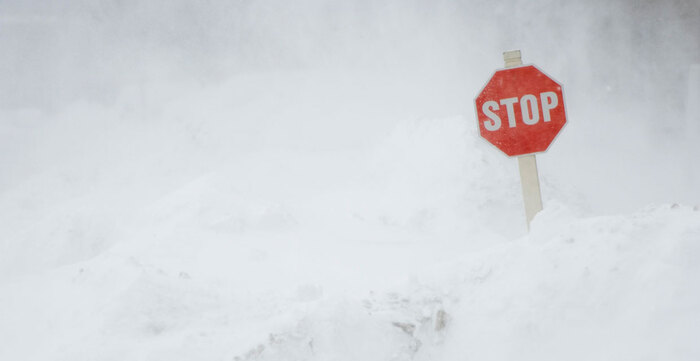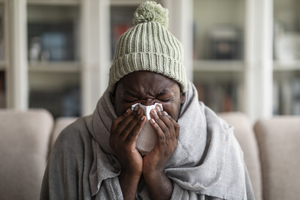Key points
- Wind chill temperature, which combines outside temperature and wind speed, determines the danger of exposure in cold weather.
- Frostbite can occur within half an hour at wind chill temperatures of -18 or below, and faster with increasing wind speeds.
- Frostbite symptoms include a waxy appearance, itching or burning skin, numbness, and pain and redness as the skin warms up.
- Hypothermia, a dangerously low body temperature of 95 F or lower, can be fatal and requires immediate medical attention.
- The article concludes by advising readers to always check the wind chill before going outside in winter, to dress in layers and wear a hat, and to take other precautions to stay warm and safe during the cold season.

In many parts of the United States, the winter season brings snow,
ice, and chilly seasonal activities like sledding, skiing, snowboarding,
and ice skating. Whether you’re planning to flop down and make snow
angels or simply brave the walk to work, you must first understand the
potential dangers of cold weather. Keep an eye out for these signs of
potential hazards and take proper measures to stay safe all season.
Calculating the Wind Chill Temperature
The wind chill temperature is what the outside temperature feels like when combined with the wind speed. The faster the wind is blowing, the more effective it is at carrying heat away from your body. Though the temperature may be 10 degrees outside, it will actually feel like a mere 1 degree with a wind speed of 5 miles per hour. If the wind speed reaches 20 mph, ten degrees will feel like -9. At 30 mph, it feels like -12. The wind chill temperature is what determines the danger you’re facing from exposure.
Unsafe Temperatures
Frostbite will set in within half an hour when wind chill temperatures are -18 or below. It will set in even faster as temperatures drop and wind speeds increase. A high wind is more dangerous than a low temperature in these situations. You can get frostbite in just 10 minutes at a wind chill of -33 if the wind is blowing at 60 mph. At a wind speed of 5 mph, the wind chill can reach -57 before you’re at the same level of danger. The National Weather Service offers a handy wind chill temperature index to help you gauge the danger level.
Frostbite Symptoms and Treatment
Frostbite occurs when the skin and tissues actually freeze. The extremities and exposed areas of skin are at the highest risk. Frostbite is most likely on the hands, feet, ears, and nose. Signs of frostbite include:
- A waxy, hard, or greyish-yellow appearance
- Itching or burning skin
- Numbness
- Pain and redness as the skin warms up
If you suspect that you’re in danger of developing frostbite, cover the exposed area as soon as possible. Tuck cold hands into your armpits to help warm them and get inside as soon as possible. Remove wet clothes once you’re indoors and warm the affected area slowly.
Hypothermia Symptoms and Treatment
Hypothermia is a dangerously low body temperature of 95 F or lower. Untreated hypothermia can lead to death. Symptoms include:
- Disorientation
- Uncontrollable shivering
- Slurred speech
- Drowsiness or exhaustion
- Slow, shallow breathing
- Apathy
Hypothermia requires immediate medical attention. Keep the person warm while you wait for help, but do not apply extreme heat. As with frostbite, be sure to warm them slowly.
Preventative Measures
Always check the wind chill and not just the temperature before you head outside in winter. Wear layers for added warmth and insulation. Keep a hat on, as you can lose 40 percent of your body heat through your head.
With
proper precautions, it’s possible to have a safe and exciting time
outdoors in cold weather. Take measures to stay warm and enjoy the
season.
FAQs
What is the wind chill temperature?
The wind chill temperature is what the outside temperature feels like when combined with the wind speed. The faster the wind is blowing, the more effective it is at carrying heat away from your body.
How does wind speed affect the perceived temperature?
Wind speed can significantly lower the perceived temperature. For example, even if the actual temperature is 10 degrees, it can feel like -9 degrees with a wind speed of 20 mph.
At what wind chill temperature does frostbite set in?
Frostbite can set in within half an hour when wind chill temperatures reach -18 degrees or below. The risk increases as temperatures drop and wind speeds increase.
What are some symptoms of frostbite?
Symptoms of frostbite include a waxy, hard, or greyish-yellow appearance of the skin, itching or burning skin, numbness, and pain and redness as the skin warms up.
How should frostbite be treated?
If you suspect frostbite, you should cover the exposed area as soon as possible, tuck cold hands into your armpits to warm them, and get indoors as soon as possible. Once indoors, remove wet clothes and warm the affected area slowly.
What is hypothermia and what are its symptoms?
Hypothermia is a dangerously low body temperature of 95 F or lower. Symptoms include disorientation, uncontrollable shivering, slurred speech, drowsiness or exhaustion, slow, shallow breathing, and apathy.
How should hypothermia be treated?
Hypothermia requires immediate medical attention. While waiting for help, keep the person warm but do not apply extreme heat. The person should be warmed slowly.
What precautions can be taken to stay safe in cold weather?
Always check the wind chill and not just the temperature before going outside in winter. Wear layers for added warmth and insulation, and keep a hat on to prevent heat loss through the head.









